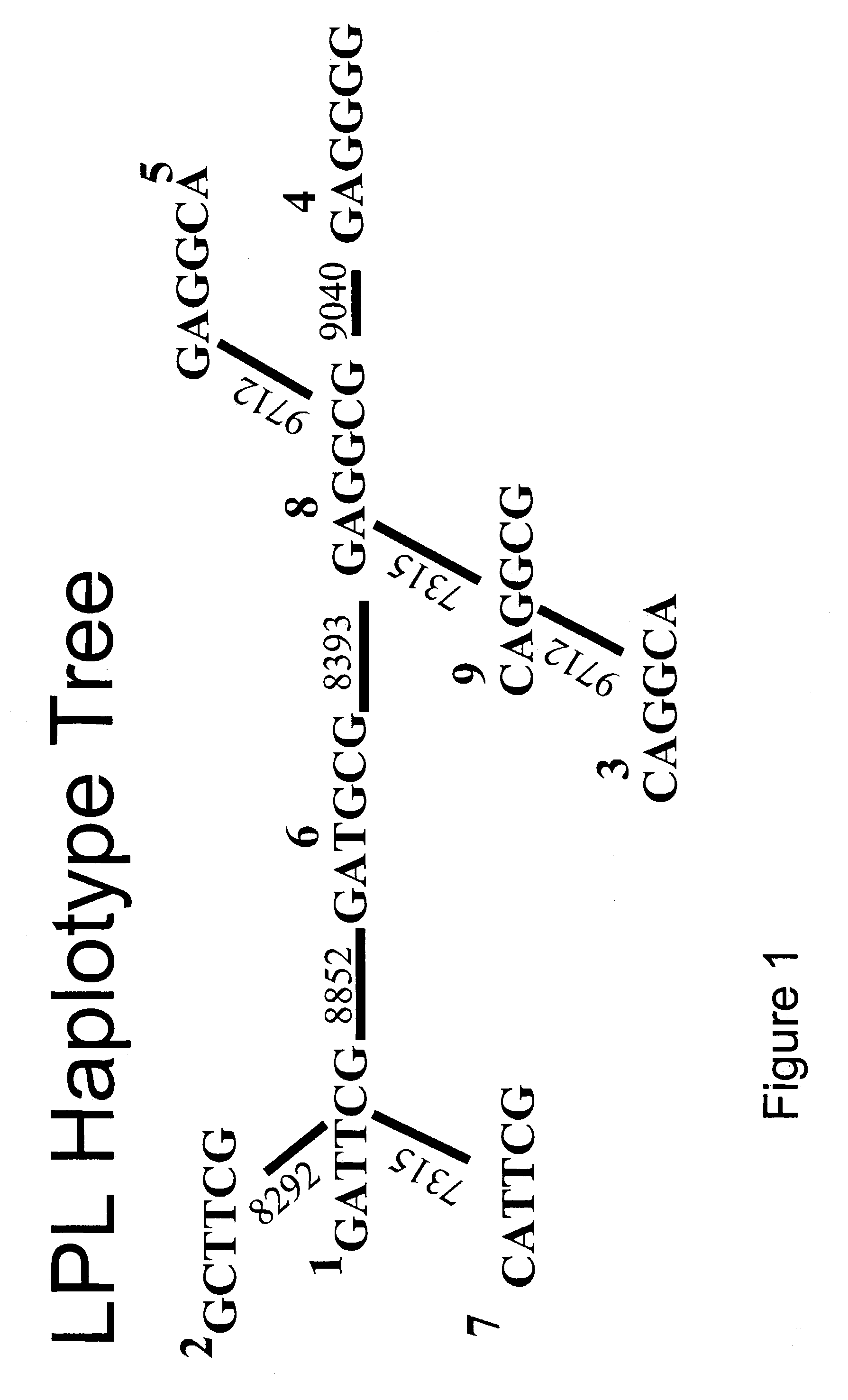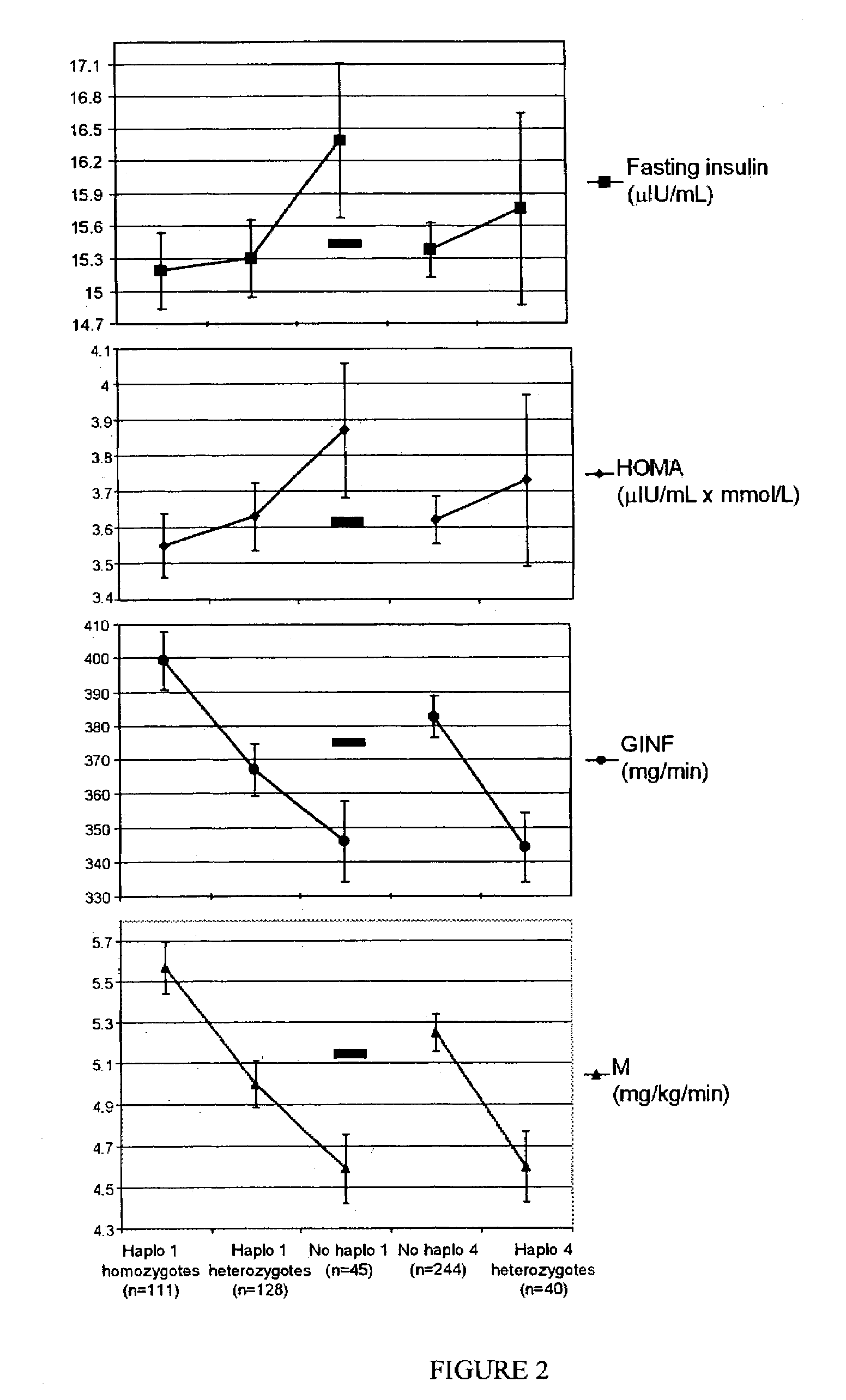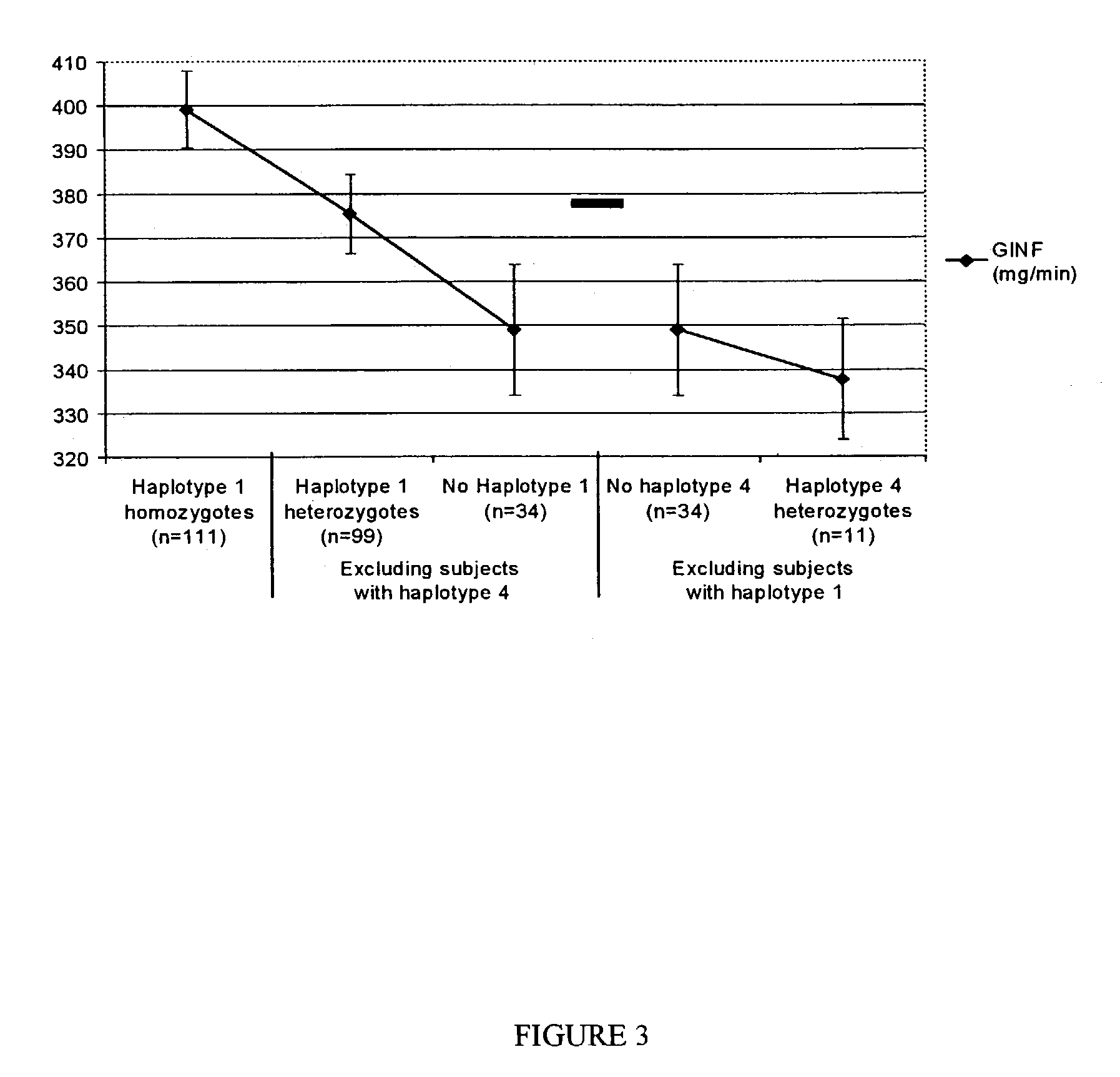Method of haplotype-based genetic analysis for determining risk for developing insulin resistance and coronary artery disease
a genetic analysis and haplotype technology, applied in the field of medical genetics, can solve the problems of limiting the common approach of examining one, and increasing the risk of cardiovascular events and deaths
- Summary
- Abstract
- Description
- Claims
- Application Information
AI Technical Summary
Benefits of technology
Problems solved by technology
Method used
Image
Examples
example 1
Lipoprotein Lipase Gene Haplotypes in Mexican-Americans: Structure and Association with Coronary Artery Disease
[0047]Briefly, six polymorphisms sufficient to distinguish the most common haplotypes in the 3′ end of LPL were identified by genotyping ten polymorphisms in a small pilot population. These were used to haplotype LPL in large family samples of Mexican-Americans and non-Hispanic Caucasians. A case-control association study was performed comparing Mexican-Americans with and without coronary artery disease. The two ethnic groups exhibited significant genetic differences. Among Mexican-Americans, homozygosity for LPL haplotype 1 was protective against coronary artery disease (OR=0.50, 95% CI 0.27–0.91). This study outlines the haplotype structure of the LPL gene, illustrates the utility of haplotype-based analysis in association studies, and demonstrates the importance of defining haplotype frequencies for different ethnic groups.
Materials and Methods
[0048]Subjects. The UCLA / Ce...
example 2
Haplotype Analysis of the Association of the Lipoprotein Lipase Gene with Insulin Sensitivity
[0076]Lipoprotein lipase (LPL) is a candidate gene implicated in features of the cardiovascular dysmetabolic syndrome, atherosclerosis and components of the insulin-resistance syndrome, i.e., hypertension, lipid levels, and fasting insulin.
[0077]The aim of this study was to evaluate the relationship between the LPL gene and direct, measurement of insulin sensitivity in Mexican American families ascertained through patients with CAD, a population and disorder with a high frequency of insulin resistance. Insulin senstivity was evaluated by assessment of the glucose infusion rate (GINF) during a euglycemic hyperinsulinemic clamp study, which is widely regarded as the most direct physiologic measurement of insulin sensitivity (38, 39).
[0078]Mexican-American nuclear families were ascertained via a parent with documented CAD in the Los Angeles area. A total of 91 adult offspring underwent euglycem...
example 3
Evidence of Linkage and Association Between LPL and Insulin Sensitivity / Resistance in Mexican-American Hypertension Families
[0083]We have shown hereinabove that blood pressure (BP) and insulin sensitivity / resistance (IR) cosegregate in Mexican-American families and that there most likely are gene(s) contributing to both BP and IR. Previous studies have shown evidence of linkage and / or association of the HindIII polymorphism in the LPL gene with IR, as well as IR-associated hypertension, dyslipidemia, and atherosclerosis. However, in most cases insulin sensitivity was assessed by indirect methods. To further examine the role of the LPL gene in IR, we genotyped six (7315, 8292, 8393, 8852, 9040, 9712) LPL 3′ end single nucleotide polymorphisms (SNPs) in 390 members of 77 Hispanic families ascertained via hypertensive probands. Insulin sensitivity / resistance was directly assessed via hyperinsulinemic euglycemic glucose clamps. Multipoint linkage analyses were performed using SIBPAL2. A...
PUM
| Property | Measurement | Unit |
|---|---|---|
| Magnetic field | aaaaa | aaaaa |
| Magnetic field | aaaaa | aaaaa |
| Magnetic field | aaaaa | aaaaa |
Abstract
Description
Claims
Application Information
 Login to View More
Login to View More - R&D
- Intellectual Property
- Life Sciences
- Materials
- Tech Scout
- Unparalleled Data Quality
- Higher Quality Content
- 60% Fewer Hallucinations
Browse by: Latest US Patents, China's latest patents, Technical Efficacy Thesaurus, Application Domain, Technology Topic, Popular Technical Reports.
© 2025 PatSnap. All rights reserved.Legal|Privacy policy|Modern Slavery Act Transparency Statement|Sitemap|About US| Contact US: help@patsnap.com



